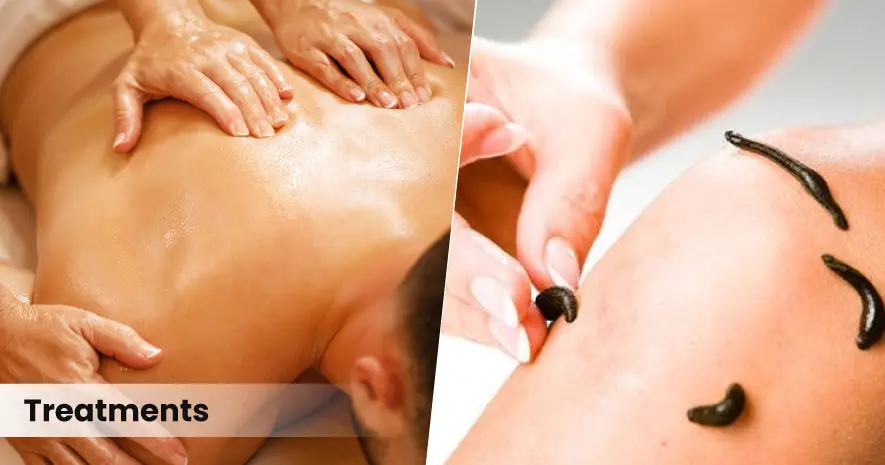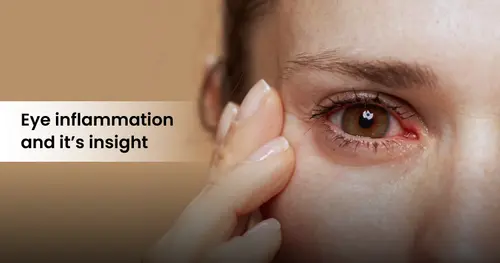
Skin disorders, ranging from temporary irritations to chronic conditions like eczema, psoriasis, and even leprosy, impact millions globally. Beyond their visible effects, these conditions can influence psychological well-being, self-confidence, and social interactions. While modern medicine predominantly focuses on managing symptoms with topical corticosteroids, antihistamines, or immunosuppressants, Ayurveda—an ancient yet highly sophisticated system of healing—provides a holistic and individualized approach to skin health. Instead of merely addressing surface-level symptoms, Ayurveda considers the skin a reflection of internal physiological balance, emphasizing the need to correct underlying imbalances in order to achieve lasting relief.
Ayurvedic Understanding of Skin as a Reflection of Internal Health
According to Ayurvedic principles, the skin (Twak) is not an isolated structure but a dynamic interface reflecting the state of blood (Rakta), plasma (Rasa), muscles (Mamsa), and lymphatic tissues (Lasika). Any imbalance in these dhatus (tissues) can lead to visible skin disturbances, with the doshas—Vata, Pitta, and Kapha—playing a central role in disease manifestation.
In Ayurvedic dermatology, skin diseases fall under the broad classification of Kushta, a term encompassing a spectrum of dermatological conditions. Kushta is further categorized into Mahakushta (severe and deep-rooted disorders, including chronic and systemic diseases like psoriasis and leprosy) and Kshudra Kushta (milder, superficial conditions such as acne, urticaria, or minor eczema). The distinction between these classifications allows for targeted therapeutic strategies based on the depth and chronicity of the disorder.
Causes of Skin Disorders in Ayurveda
Ayurveda attributes skin diseases to a range of internal and external factors, many of which align with contemporary dermatological research. Poor dietary choices, such as excessive consumption of oily, spicy, or processed foods, aggravate Pitta dosha, increasing heat and inflammation in the skin. Similarly, consuming heavy, cold, or mucus-forming foods can elevate Kapha dosha, leading to excessive oiliness, clogged pores, and microbial overgrowth—common triggers for conditions like acne and fungal infections.
Lifestyle factors such as chronic stress, insufficient sleep, exposure to environmental pollutants, and hormonal fluctuations contribute to doshic imbalances that manifest as skin conditions. Ayurveda also recognizes the role of Ama (toxins) in dermatological diseases, suggesting that improper digestion and inefficient elimination of metabolic waste lead to toxin accumulation, which eventually disrupts cellular health and immune function.
From a modern scientific perspective, many of these insights correlate with emerging research. Chronic inflammation, oxidative stress, and gut microbiome imbalances have been identified as key contributors to skin disorders, supporting Ayurveda’s emphasis on digestion, detoxification, and dosha balance as fundamental aspects of skin health.
Therapeutic Approach
Ayurvedic management of skin disorders follows a two-pronged strategy, combining internal purification (Shodhana) and external nourishment (Shamana) to eliminate toxins, pacify aggravated doshas, and restore the skin’s natural equilibrium.

1. Herbal Medicines and Internal Detoxification
Ayurveda relies on the therapeutic power of medicinal plants to regulate immune function, purify the blood, and rejuvenate the skin. Haridra (Turmeric), a widely researched herb, possesses potent anti-inflammatory, antimicrobial, and antioxidant properties, making it effective for conditions such as eczema, psoriasis, and acne. Nimba (Neem), a powerful detoxifying agent, combats bacterial and fungal infections, while Manjishtha (Indian madder) enhances blood circulation and lymphatic drainage, facilitating skin detoxification.
Additionally, Raktashodhana (blood purification) therapies, including herbal formulations like Patoladi Kwatha (bitter herbs that cleanse the liver) and Aragwadhadi Kashaya (Cassia-based decoctions for Kapha-Pitta pacification), serve as systemic interventions to regulate metabolic waste and inflammatory mediators. Scientific studies have validated the anti-inflammatory and immunomodulatory effects of these herbs, highlighting their potential as adjunctive therapies in chronic dermatological conditions.
2. Panchakarma:
For chronic and recurrent skin diseases, Panchakarma—Ayurveda’s intensive detoxification therapy—plays a pivotal role in breaking the disease cycle. The purification techniques used in Panchakarma, such as Virechana (therapeutic purgation), Rakta Mokshana (bloodletting), and Basti (medicated enemas), target the deeper pathophysiological mechanisms driving skin inflammation and toxin accumulation.
Scientific investigations have demonstrated that detoxification protocols can lower systemic inflammatory markers, improve gut microbiota diversity, and enhance antioxidant defense systems, reinforcing Ayurveda’s perspective on Panchakarma as a vital intervention for systemic dermatological health.
3. External Therapies:
Ayurvedic external therapies are designed to soothe, heal, and restore skin integrity through Lepas (herbal pastes), Abhyanga (medicated oil massages), and Parisheka (herbal decoction baths). Topical applications using Raktachandana (red sandalwood), Yashtimadhu (licorice), and Daruharidra (tree turmeric) provide cooling, anti-inflammatory, and antimicrobial benefits, addressing various skin concerns ranging from acne and dermatitis to hyperpigmentation.
Another key external therapy, Takradhara (medicated buttermilk application), has been shown to alleviate inflammatory skin conditions by reducing Pitta-related heat and irritation, akin to modern dermatological techniques utilizing probiotic-rich formulations for eczema and rosacea management.
4. Dietary and Lifestyle Modifications
Recognizing that diet and lifestyle play crucial roles in skin health, Ayurveda prescribes tailored nutritional plans to support gut-skin balance. Emphasizing warm, fresh, and easy-to-digest meals, rich in antioxidants, polyphenols, and healthy fats, Ayurveda aligns with modern dietary recommendations for reducing inflammation and promoting skin regeneration.
Moreover, stress management practices such as Pranayama (breathwork), meditation, and yoga help regulate the neuroendocrine axis, reducing stress-induced skin flare-ups—an area well-supported by modern research linking psychological stress to dermatological diseases like psoriasis, eczema, and acne.
Ayurveda’s skin care philosophy seamlessly integrates with modern dermatology, offering a personalized, preventive, and restorative approach that goes beyond symptomatic relief. The increasing body of scientific evidence supporting herbal medicines, detoxification protocols, and gut-skin interactions validates Ayurveda’s relevance in contemporary dermatological practice.
By addressing internal imbalances, detoxifying metabolic waste, and restoring skin homeostasis through personalized interventions, Ayurveda provides a comprehensive and sustainable model for skin health, one that aligns with the growing movement toward integrative and functional medicine approaches in dermatology.
Conclusion:
In an era where chronic skin conditions continue to rise due to environmental toxins, dietary imbalances, and stress, Ayurveda stands out as a time-tested, scientifically supported alternative that fosters deep healing and long-term wellness. By embracing Ayurveda’s holistic principles—purification, rejuvenation, and personalized care—individuals struggling with skin disorders can achieve not just symptom relief, but a profound transformation in overall health and vitality.
FAQ
1. How does Ayurveda explain the root cause of skin disorders?
In Ayurveda, skin disorders are caused by imbalances in the three doshas—Vata, Pitta, and Kapha—and toxins (Ama) accumulated due to poor digestion and lifestyle choices. This holistic approach sees the skin as a reflection of internal health, not just a surface issue.
2. What are common skin diseases classified under Kushta in Ayurveda?
Ayurveda categorizes skin diseases under "Kushta," which includes Mahakushta (severe conditions like psoriasis and leprosy) and Kshudra Kushta (milder issues like acne, urticaria, and eczema), allowing customized treatment plans for each type.
3. What role does diet play in Ayurvedic treatment for skin disorders?
In Ayurveda, a skin-friendly diet emphasizes fresh, warm, and easy-to-digest foods, avoiding spicy, oily, and processed items to pacify aggravated doshas and support gut health, which is crucial for achieving clear and radiant skin.
4. Are there Ayurvedic external therapies for faster skin healing?
Yes, Ayurveda offers external therapies like Lepas (herbal pastes), Abhyanga (oil massages), and Takradhara (medicated buttermilk therapy) that nourish the skin, reduce inflammation, and accelerate the healing process for various dermatological conditions.
5. Can stress management techniques in Ayurveda improve skin conditions?
Absolutely. Practices like Pranayama (breathwork), meditation, and yoga are integral to Ayurvedic skin care, as they help regulate stress hormones and prevent flare-ups of skin diseases like acne, eczema, and psoriasis.

November 26, 2025

November 13, 2025

November 09, 2025

October 27, 2025

October 24, 2025

October 18, 2025
We use cookies that are necessary for the smooth operation of the website, to improve our website and to display advertising relevant to you on social media platforms and partner websites. By clicking "Accept all", you agree to the use of cookies for convenience features and statistics and tracking. You can change these settings again at any time. If you do not agree, we will limit ourselves to technically necessary cookies. For more information, please see our privacy policy .